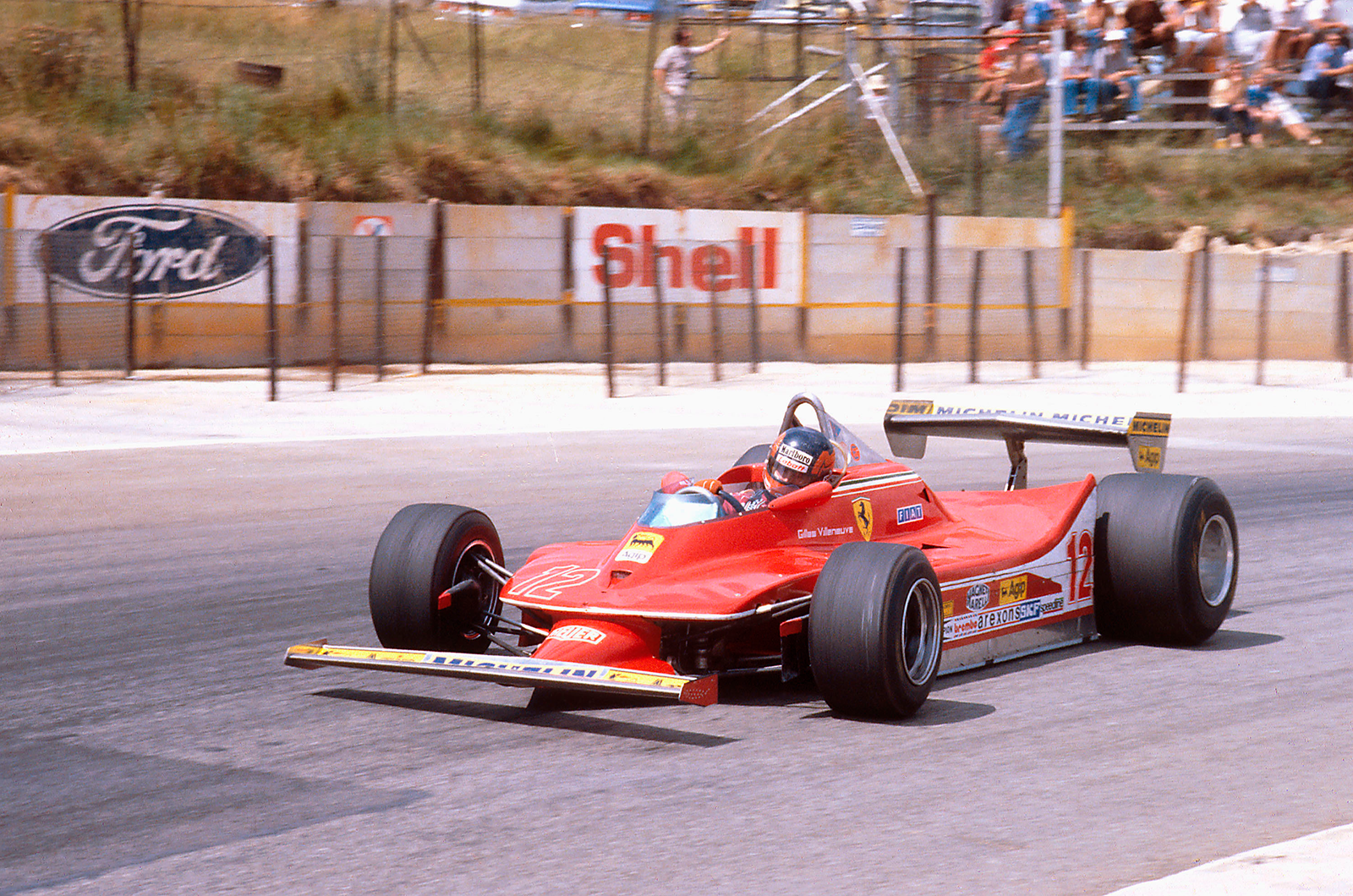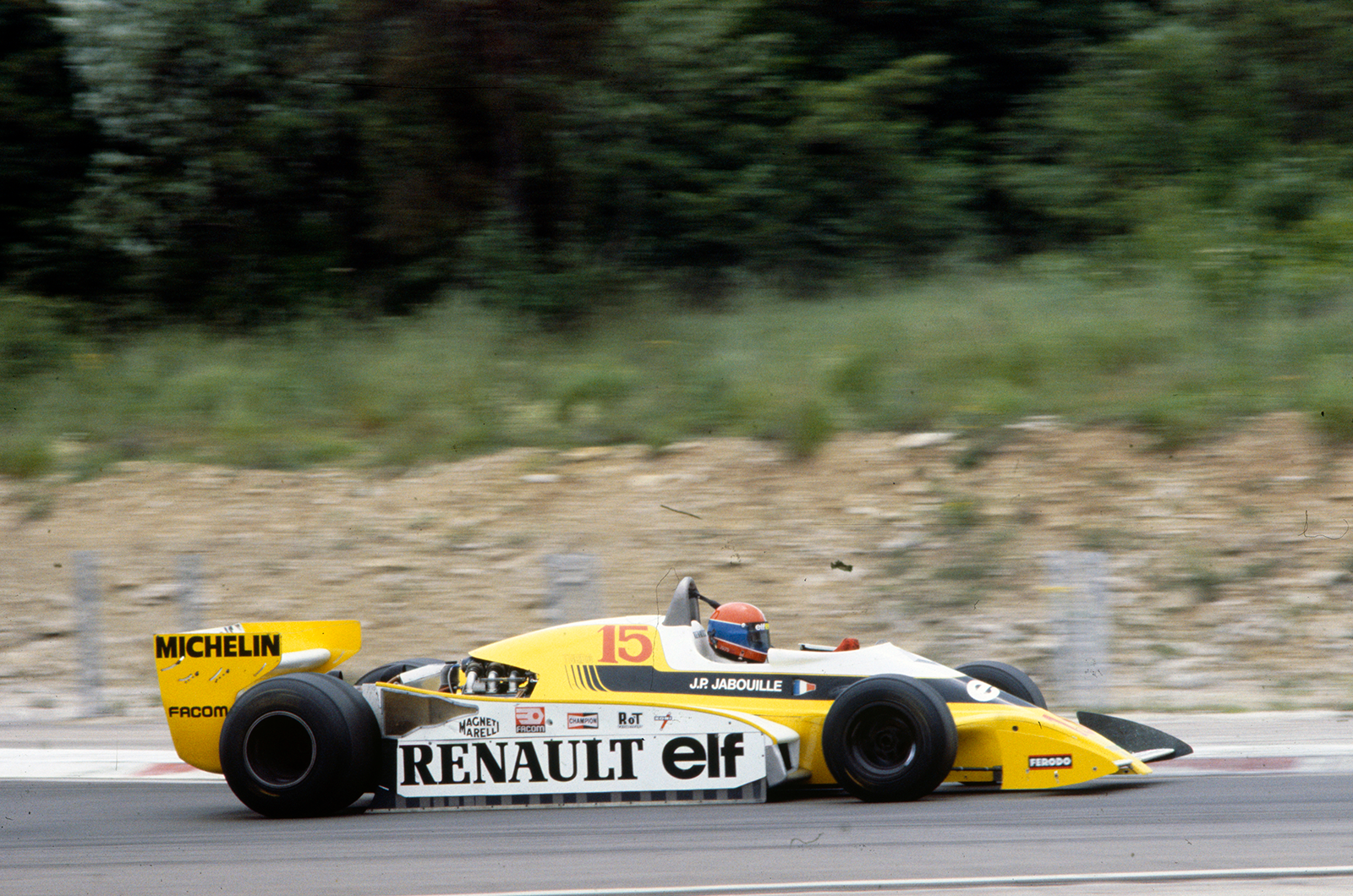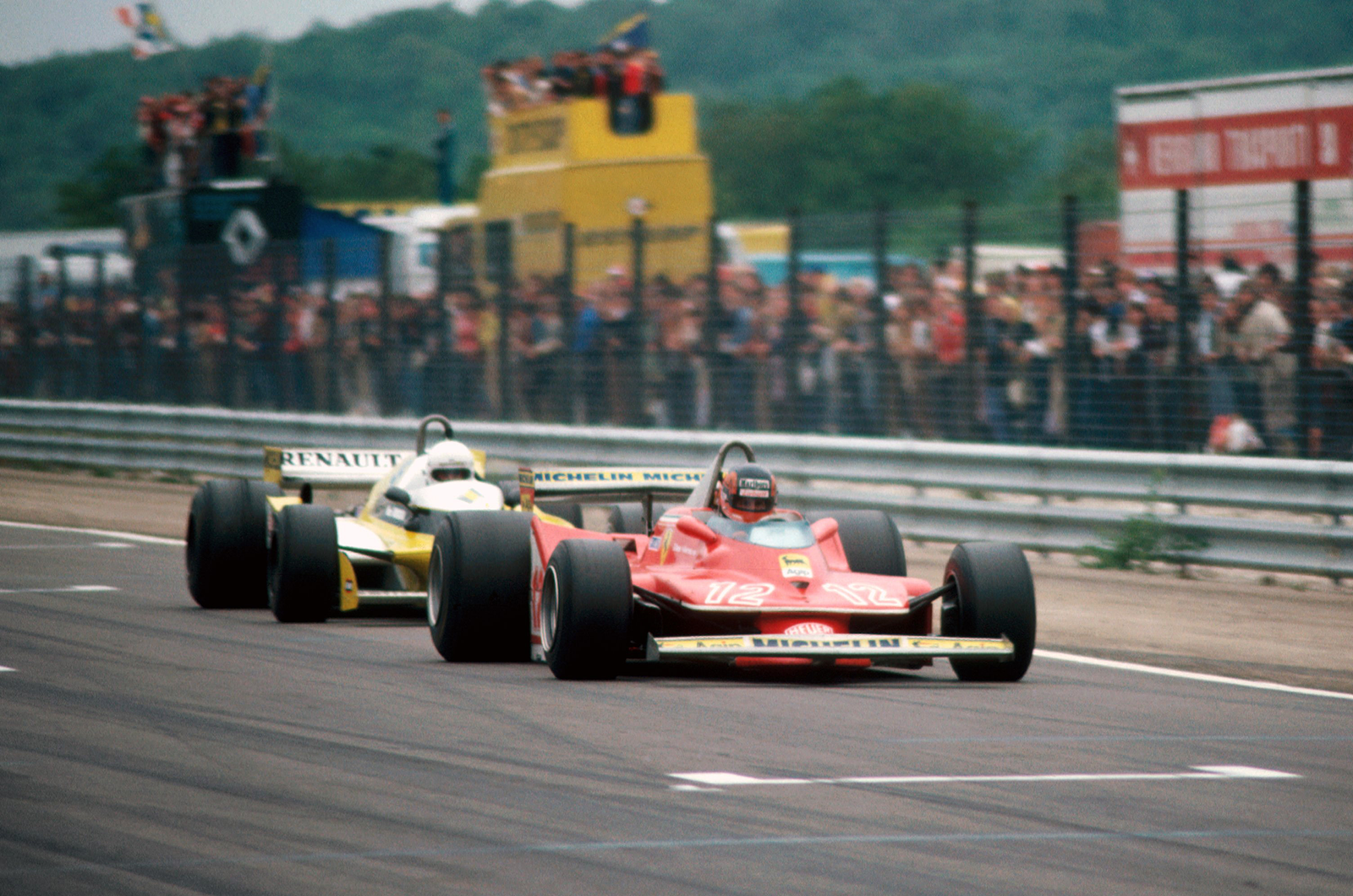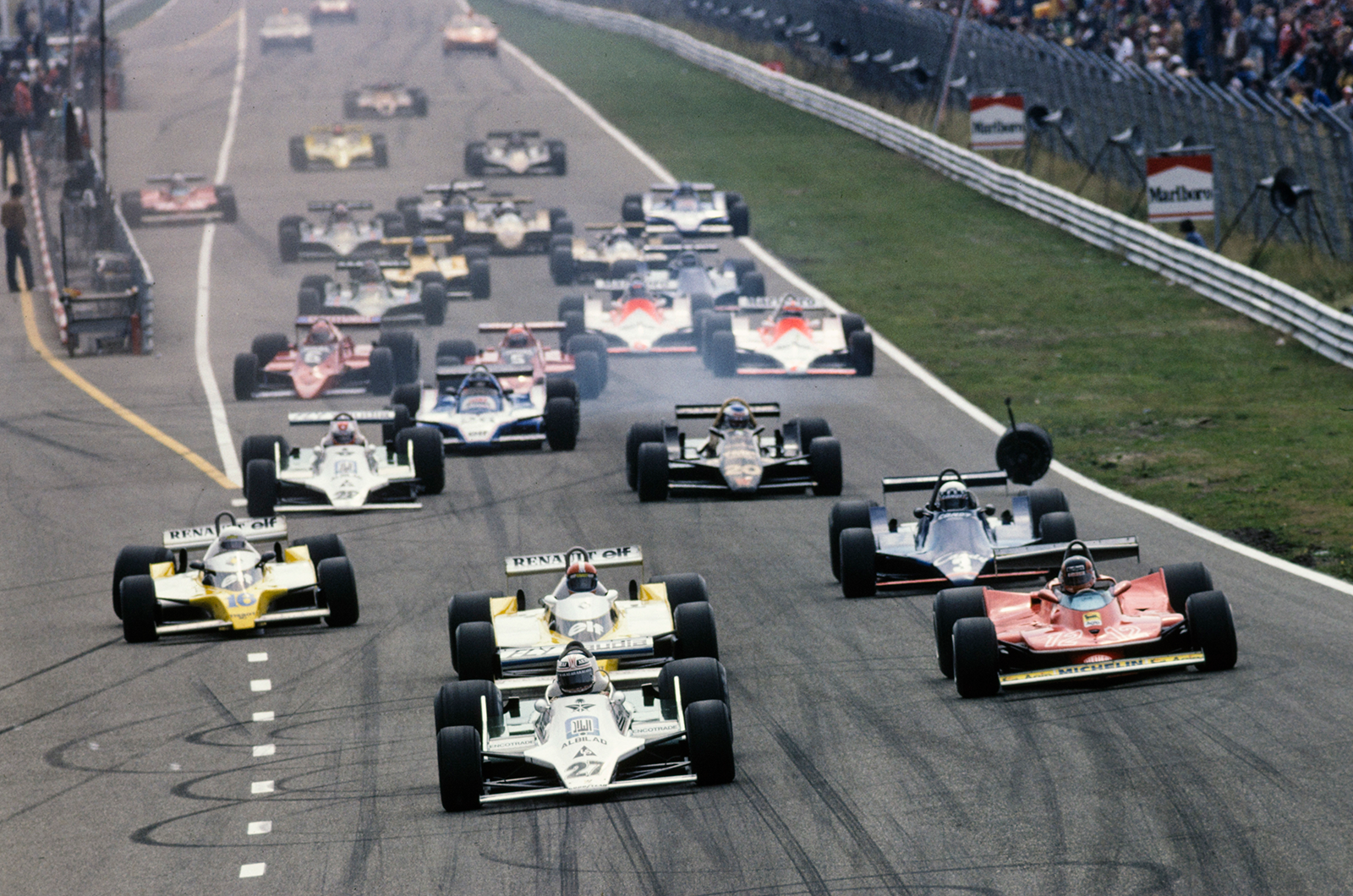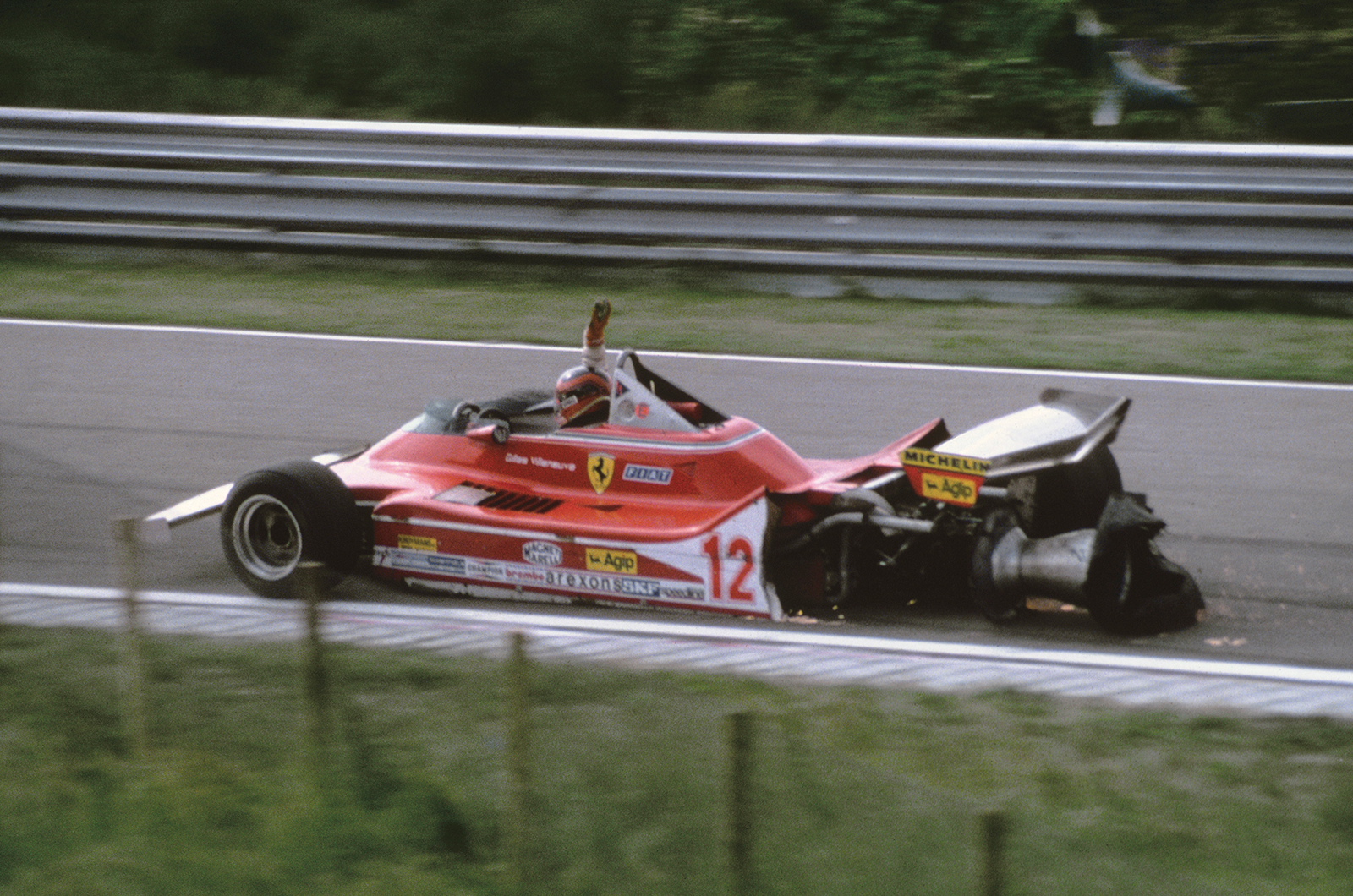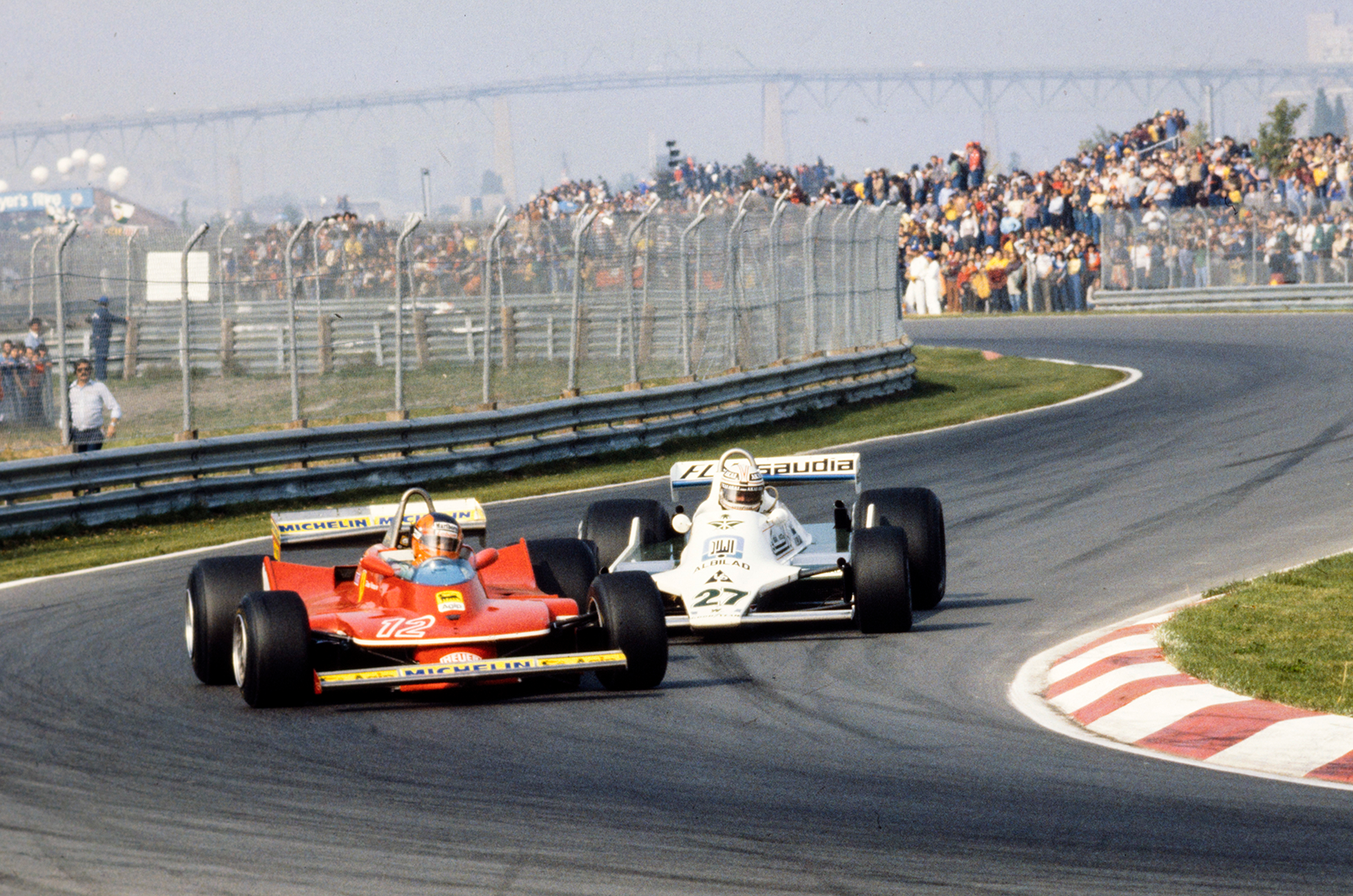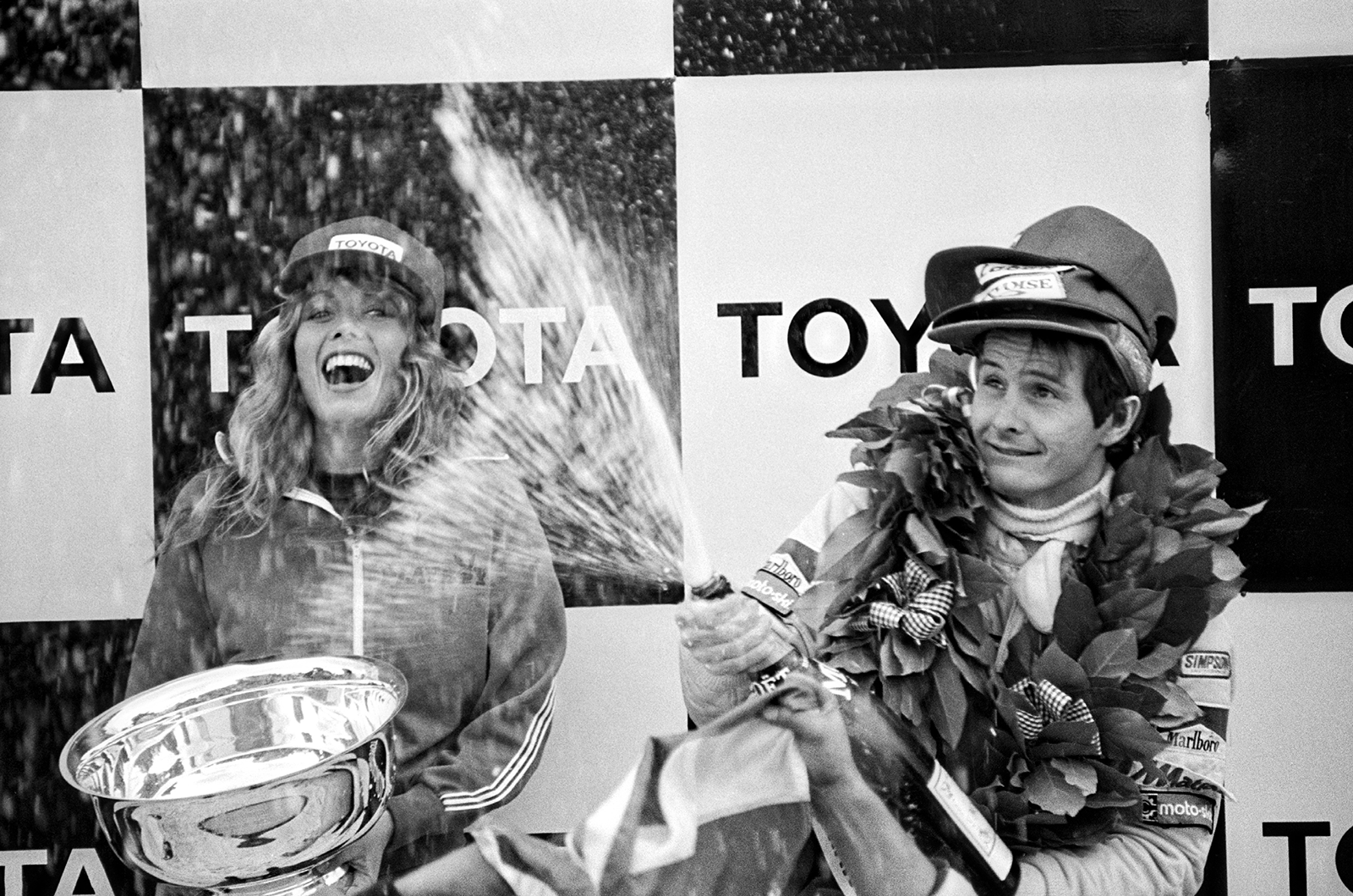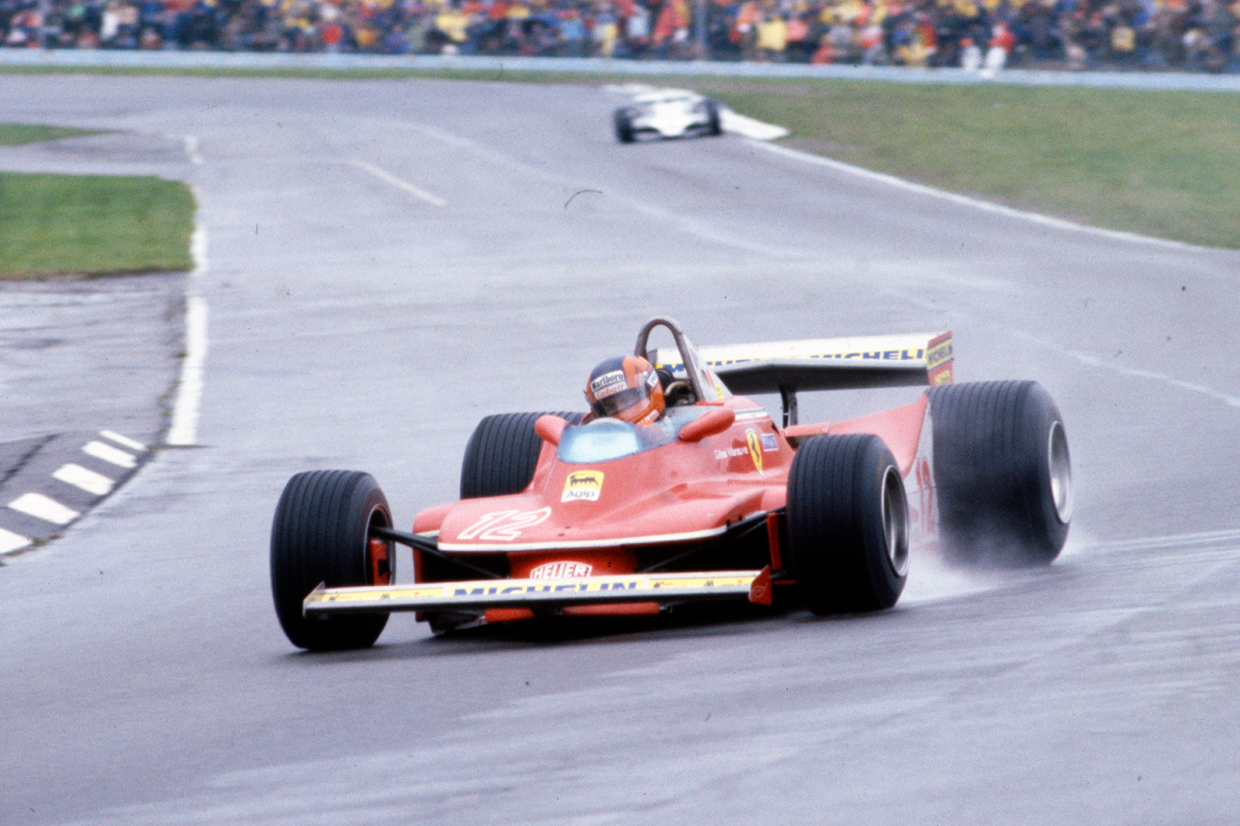
Friday practice at Watkins Glen in 1979 was wet. Very wet. Few of the drivers bothered to go out, but one who did was Jody Scheckter.
The newly crowned world champion later admitted that he thoroughly scared himself en route to posting a lap of 2 mins 11.029 secs in the torrential conditions, and his time put him well clear of the next car.
But it was good enough to be only second fastest in the session. His Ferrari teammate, Gilles Villeneuve, knew that race day was also likely to be wet, so he was another to venture out. Quite apart from anything else, he loved to drive in the rain.
And it was Villeneuve who ended up topping the timesheets. His best lap? It was 2 mins 1.437 secs – more than nine seconds faster than Scheckter.
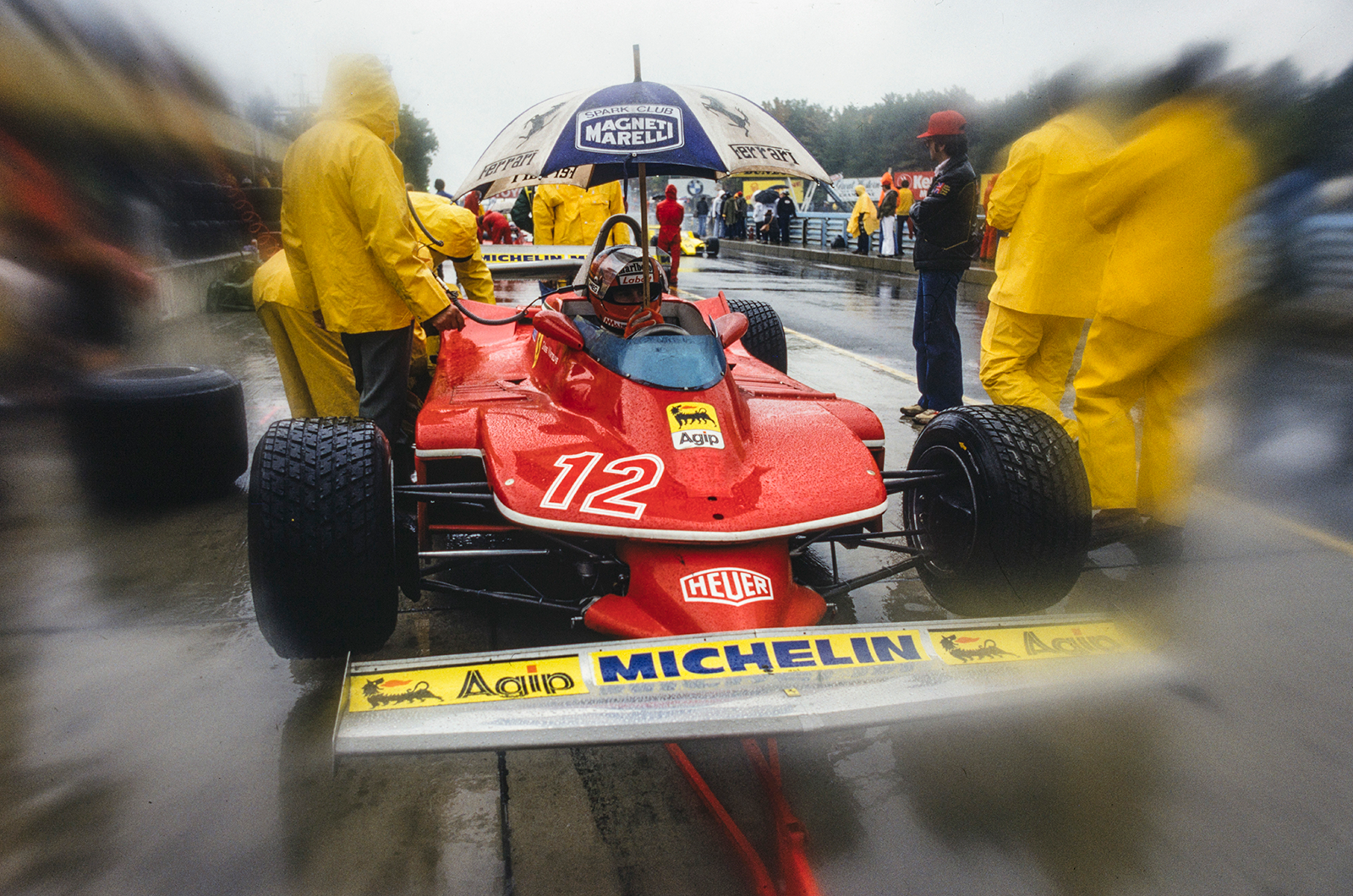
Villeneuve keeping dry at Watkins Glen in his Ferrari 312T4
On the pit wall, Ligier driver Jacques Laffite watched with journalists Denis Jenkinson and Nigel Roebuck.
“Look at him,” said Laffite as Villeneuve splashed past once more. “He’s different from the rest of us. On a separate level.”

